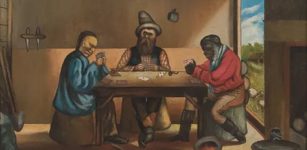City Of Purushattum: Oldest Known Written Document Reveals History Of 4,500-Year-Old Silver City
AncientPages.com - The oldest known written document in Anatolia has been found during excavations in Acemhöyük Mound in the Central Anatolian province of Aksaray. It is an area of one of the oldest kingdom centers in Anatolia.
The single-line inscription, carved on a piece of rock crystal, is not only the oldest one in Anatolia but also in Europe.
Acemhöyük Mound has the center made up of a hill measuring 800x700 meter and a lower city that surrounds it. The hill was the kingdom’s acropolis, where the administrative class lived. The lower city, where traders and the public lived, was a kind of international market place.
Archaeological excavation in this area began in 1982 and during this period of time they revealed 12 archaeological layers dated back to some 4,500 years ago.
The results from the excavations were compared with written historical documents and revealed that Acemhöyük center was an ancient city of Purushattum.
"The first information about the city is mentioned in the Sartamhari (King of War) tablets, which depicts the victories of Sargon, the founder of Akkad city, located in present-day southern Iraq.
According to the tablets, traders working in Purushattum complained about the local king of the city to Sargon. Then Sargon came to Anatolia climbing past the Taurus Mountains and seized the city," according to an article in Hurriyet Daily News.
Oldest known written document in Anatolia
In the old Middle East, traders used precision weights to measure their valuable goods. Lots of weights made of various materials have been found in Acemhöyük, which was one of the important trade centers in Anatolia. But a sample that was unearthed last year caused excitement in the excavation team. Because there were some cuneiform symbols on this weight.
Made up of rock crystal, the weight was found in an early Bronze Age structure. The layer of this structure dates back to 2250 B.C., according to radiocarbon dating. Therefore this crystal weight unearthed in this layer becomes the oldest known written document in Anatolia and Europe.
See also:
Urukagina: Ruler Of Sumerian City Of Lagash And His Reforms To Combat Corruption
King Ur-Nammu – King Of Ur, King Of Sumer And Akkad – The One Who Built The Temple Of God Enlil
Harput Relief: 4,000-Year-Old Artifact Pushes Back History Of Region By 1,000 Years
Professor Aliye Öztan, who led excavations since 1989, says that cuneiform experts try to decipher the inscription; however, the symbols on the weight are not readable enough makes the analysis of the inscription hard.
This is why it is not still understood if the inscription was written in a local Anatolian language or the international language of the era, Akkadian. But after all, this small finding of 10.4 grams has already gained the title of being the oldest known written document in Anatolia.
Purushattum - Silver city of the Middle East
Assyrian traders in northern Iraq established international markets in Anatolia 4,000 years ago. They brought luxurious fabrics and tins to Anatolia and brought silver to Assyria from Anatolia. The weights were used to measure valuable goods like silver in such exchanges.
According to cuneiform tablets, the Purushattum silver was very famous among the Assyrian traders. Many traders turned their earnings into high-quality Purushattum silver and returned to Assyria. The Purushattum kings, who became richer thanks to this international trade, were using gilded ivory furniture, vases made of crystal or obsidian and wearing dresses made of imported Mesopotamian fabric.
Clay witness of international trade
The impression seals found in Acemhöyük reveal how the city was a busy center in the trade of the Middle East. Among them are samples owned by the Assyrian King Shamsi Adad I, Syrian princess Nagihanum and Carchemish king Aplahanda. All these people were the super powers of the world trade 4,000 years ago.
AncientPages.com
























